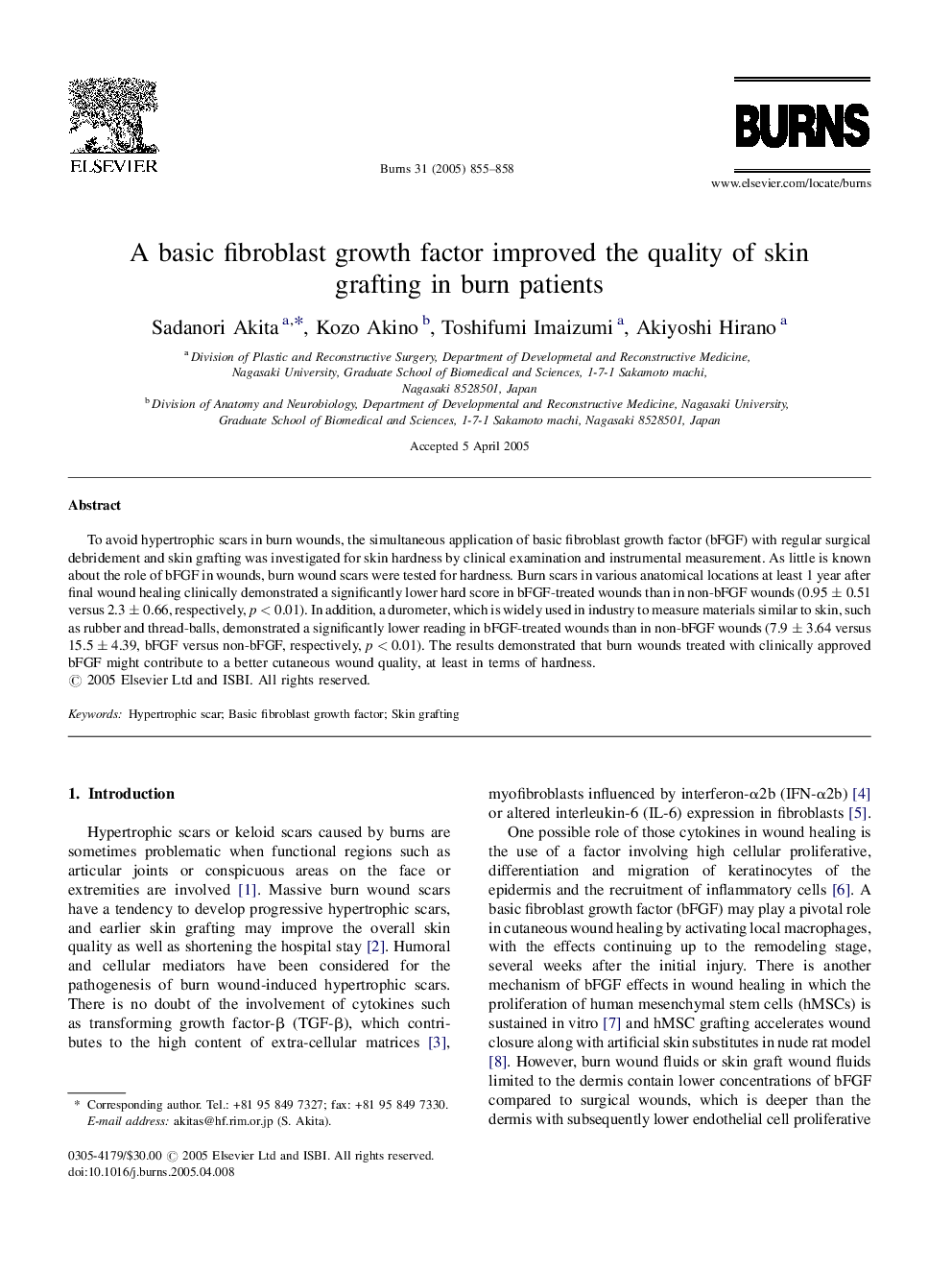| Article ID | Journal | Published Year | Pages | File Type |
|---|---|---|---|---|
| 9207911 | Burns | 2005 | 4 Pages |
Abstract
To avoid hypertrophic scars in burn wounds, the simultaneous application of basic fibroblast growth factor (bFGF) with regular surgical debridement and skin grafting was investigated for skin hardness by clinical examination and instrumental measurement. As little is known about the role of bFGF in wounds, burn wound scars were tested for hardness. Burn scars in various anatomical locations at least 1 year after final wound healing clinically demonstrated a significantly lower hard score in bFGF-treated wounds than in non-bFGF wounds (0.95 ± 0.51 versus 2.3 ± 0.66, respectively, p < 0.01). In addition, a durometer, which is widely used in industry to measure materials similar to skin, such as rubber and thread-balls, demonstrated a significantly lower reading in bFGF-treated wounds than in non-bFGF wounds (7.9 ± 3.64 versus 15.5 ± 4.39, bFGF versus non-bFGF, respectively, p < 0.01). The results demonstrated that burn wounds treated with clinically approved bFGF might contribute to a better cutaneous wound quality, at least in terms of hardness.
Related Topics
Health Sciences
Medicine and Dentistry
Critical Care and Intensive Care Medicine
Authors
Sadanori Akita, Kozo Akino, Toshifumi Imaizumi, Akiyoshi Hirano,
